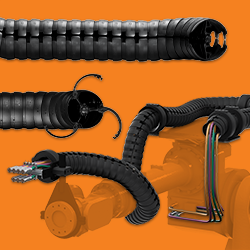NEXCOM EtherCAT-Enabled Panel PC Raises Production Speed by 40% with Simplified System Architecture
NEXCOM APPC 1530T enables a manufacturer and its clients to produce more corrugated metal sheets, serve more customers, and generate more revenue.
Overview:
Challenges:
Having a spate of applications, corrugated metal sheets is a construction material widely used for roofing, siding, and wall cladding. Facing overwhelming market demand as well as heavy competition, the manufacturer was under the mounting pressure to build new roll forming lines which can deliver a higher volume of corrugated metal sheets in a shorter time span than previously anticipated. Challenged to speed up roll forming lines, the manufacturers has embraced NEXCOM' APPC 1530T, an EtherCAT-enabled 15" panel PC, over PLCs.
NEXCOM's Solution:
Installed in roll forming lines, the APPC 1530T is used to control and display operation information of a series of manufacturing processes. The APPC 1530T begins with unrolling a galvanized steel coil into a flat sheet which is then transferred and guided to roll forming units to shape a beautiful trapezoidal or sinusoidal profile. Next, the APPC 1530T sets fly shears into action to cut the corrugated metal sheet into pieces of a desired length, and then weighs and stacks the finished products, which are produced at a line speed of 70 m/min.
It is a seemingly simple work yet requiring roll forming lines to show mastery of high-speed, multi-axis, multi-point control that was lacking in existing roll forming lines which took two Modbus RTU PLCs and a 7" HMI to do the same work and maxed out at about 50 m/min.
Solution Benefits:
Building roll forming lines with the APPC 1530T gives the manufacturer unprecedented speed, control, and simplicity over PLCs. The EtherCAT-enabled APPC 1530T outruns Modbus RTU PLCs in terms of the communication speed and is powerful enough to serve as both a PC-based controller and HMI. Compared to their predecessors, new roll forming lines orchestrated by a single unit of powerful APPC 1530T have a much simpler architecture that not only is easier to maintain but also demonstrates great simplicity in system integration.
With the support for IEC 61131-3 and PLCopen standards, the APPC 1530T enables the manufacturer to reuse already-written motion control functions by copying ladder diagrams, function block diagrams, and motion control libraries from existing roll forming lines to new lines. As a result, the manufacturer is allowed to accelerate time to market of innovations with reduced programming efforts.
Featured Product

igus® - Free heavy-duty plastic bearings sample box
The iglide® heavy-duty sample box provides a selection of five unique iglide bearings, each suitable for use in heavy-duty equipment due to their self-lubricating, dirt-resistant properties. Each bearing material boasts unique benefits and is best suited for different application conditions, though each can withstand surface pressures of at least 11,603 psi at 68°F.
